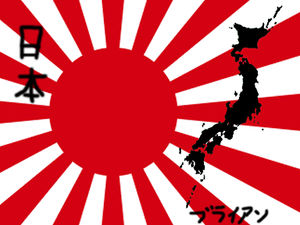Difference between revisions of "OtakuBoys About Japan"
| Line 81: | Line 81: | ||
*Preference of ranking and hierarchy | *Preference of ranking and hierarchy | ||
*Practical approach to religion - simply means following one religion in one context and another religion in another context. | *Practical approach to religion - simply means following one religion in one context and another religion in another context. | ||
| + | |||
| + | |||
| + | ==Early/Medieval Japan (710 - 1600) == | ||
| + | |||
| + | '''Key features of this period''' | ||
| + | *Warrior State - Provincial warriors take over real government | ||
| + | *Court "high culture" at its peak | ||
| + | *Japan survives Mongol attack | ||
| + | *Constant Civil War | ||
| + | *Europeans arrive | ||
| + | *Country unified under the warlords Oda Nobunaga and Toyotomi Hideyoshi | ||
| + | |||
| + | '''Key values and practices in this period''' | ||
==<div style="background: #FF7216; padding: 15px; font-weight: bold; line-height: 1em; text-indent: 15px; border-left: #FFE600 solid 32px;"><font color="white">Resources</font></div>== | ==<div style="background: #FF7216; padding: 15px; font-weight: bold; line-height: 1em; text-indent: 15px; border-left: #FFE600 solid 32px;"><font color="white">Resources</font></div>== | ||
Revision as of 18:24, 23 March 2014
| l | l | Home | o | About Japan | o | Japan's Culture and Traits | o | Hachimen Roppi | o | Freak Out | VA! |
|---|---|---|---|---|---|---|---|---|---|---|---|
Contents
Japan at a glance
- Population size: 127,650,000 (as of 2012 findings)
- High population density: 329.5 persons per square kilometer for total area
- Sex ratio of total population: 0.95 male to 1 female
- Ethnic group: 98.5% Japanese and 1.5% other
- Language: Linguistically homogenous - mainly speaking Japanese
- Religion: Shintō and Buddhism (main) Muslims and Christianity (minority)
- Industry: Science and technology in Japan is mostly focused and prominent in consumer electronics, robotics and the automotive industry.
A Brief History of Japan
Japan's impact on the modern world is enormous. Although it merely occupies less than 1/300 of the planet's land area, it wielded 1/6 of the world's planet's economic might at the peak of its economic growth in the 1980s. Till today it remains the 3rd ranking economy in the world, just behind The United States and China.
Its arrival in the world arena was nothing less than dramatic. From just spotting obscure land of paddy fields just a 150 years ago, it had rapidly grew to become a major contender among imperialist powers, a military threat to the world order and then becoming an economic superpower.
To understand the makings of this superpower, it is not just enough to examine its economic development. It is vital to consider the historical progress of the nation in broad terms. As such, we shall look at how Japan had become over the years, from the Yamato period till today, in the hope of getting some insights of key values and practices in the ancient period.
Yamato Period (400 BC - 250 AD)
Key features of this period
- Yayoi Immigration (large influx of sino-korean people to Japan)
- Establishment of Yamato imperial line
- Introduction and adoption of Buddhism
Key values and practices in this period
- Avoidence of moral judgements as to good or evil
- Pragmatic behaviour particularised to the situation rather than based on universal principals
- Incorporation of potential threat
- Adoption of the strong points of others
- Desire to make Japan a strong and respected nation
- Willingness to learn
- Preference of ranking and hierarchy
- Practical approach to religion - simply means following one religion in one context and another religion in another context.
Early/Medieval Japan (710 - 1600)
Key features of this period
- Warrior State - Provincial warriors take over real government
- Court "high culture" at its peak
- Japan survives Mongol attack
- Constant Civil War
- Europeans arrive
- Country unified under the warlords Oda Nobunaga and Toyotomi Hideyoshi
Key values and practices in this period
Resources
- Wiki:Demographics of Japan
- Wiki:Science and Tech Industry of Japan
- K.Henshall (2012) A History of Japan, Palgrave Macmillan Publishing

